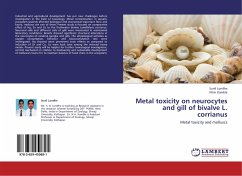A gill is an anatomical structure found in many aquatic organisms. It is a respiration organ whose function is the extraction of oxygen from water and the excretion of carbon dioxide. The microscopic structure of a gill is such that it presents a very large surface area to the external environment. Many microscopic aquatic animals, and those which are somewhat larger but inactive, are able to absorb adequate oxygen through the entire surface of their bodies, and thus they often can respire quite adequately without a gill. However, more complex or more active aquatic organisms usually require a gill or gills. Gills usually consist of thin filaments of tissue, branches, or slender tufted processes which have a highly folded surface to increase surface area. A high surface area is crucial to the gas exchange of aquatic organisms as water contains only 1/20 parts dissolved oxygen compared to air. With the exception of some aquatic insects, the filaments and lamellae (folds) contain blood or coelomic fluid, from which gases are exchanged through the thin walls. Oxygen is carried by the blood to other parts of the body.
Bitte wählen Sie Ihr Anliegen aus.
Rechnungen
Retourenschein anfordern
Bestellstatus
Storno








